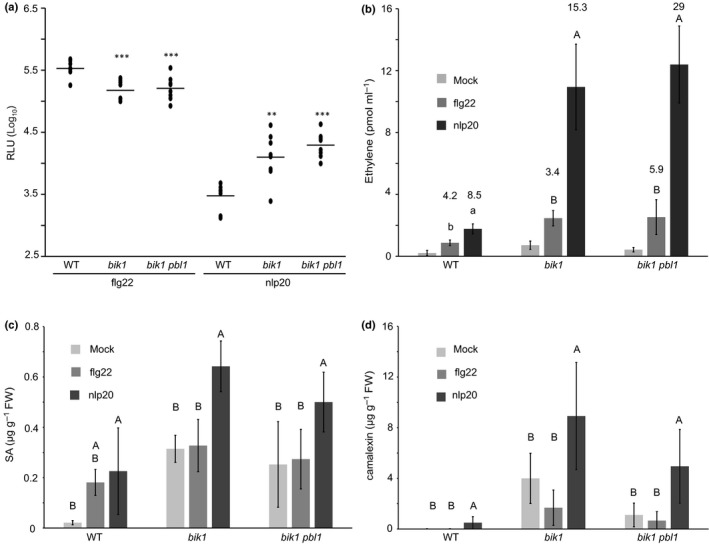Figure 5.

BIK1 plays a differential role in flg22 and nlp20 triggered signaling. (a, b) Leaf disks of Arabidopsis wild‐type (WT) plants and bik1 or bik1 pbl1 mutants were treated with 0.5 μM flg22 or nlp20, respectively. (a) For reactive oxygen species (ROS) accumulation (relative fluorescence units, RLU), peak value minus background value are shown as dots (n ≥ 6) and means are presented as lines. Asterisks indicate significant differences to the wild‐type control treatment as determined by Student's t‐test: **, P < 0.01; ***, P < 0.001. (b) For ethylene production, bars represent mean ethylene production ± SD of four replicates after 6 h of treatment. Within one line, letters indicate significant differences (P < 0.05) and within one treatment, different cases indicate significant differences (P < 0.05) as determined by ANOVA followed by Student's t‐test for all possible individual comparisons. Numbers indicate the fold changes between elicitor and mock treatment in the corresponding line. (c, d) Mature leaves of Arabidopsis WT plants or mutants were infiltrated with 0.5 μM flg22 or nlp20, respectively, or water as control (mock) and harvested after 24 h for determination of (c) salicylic acid (SA) or (d) camalexin accumulation. Bars (μg g−1 FW) present means ± SD of four biological replicates. Within one line, different letters indicate significant differences (P < 0.05) as determined by ANOVA followed by Student's t‐test for all possible individual comparisons.
